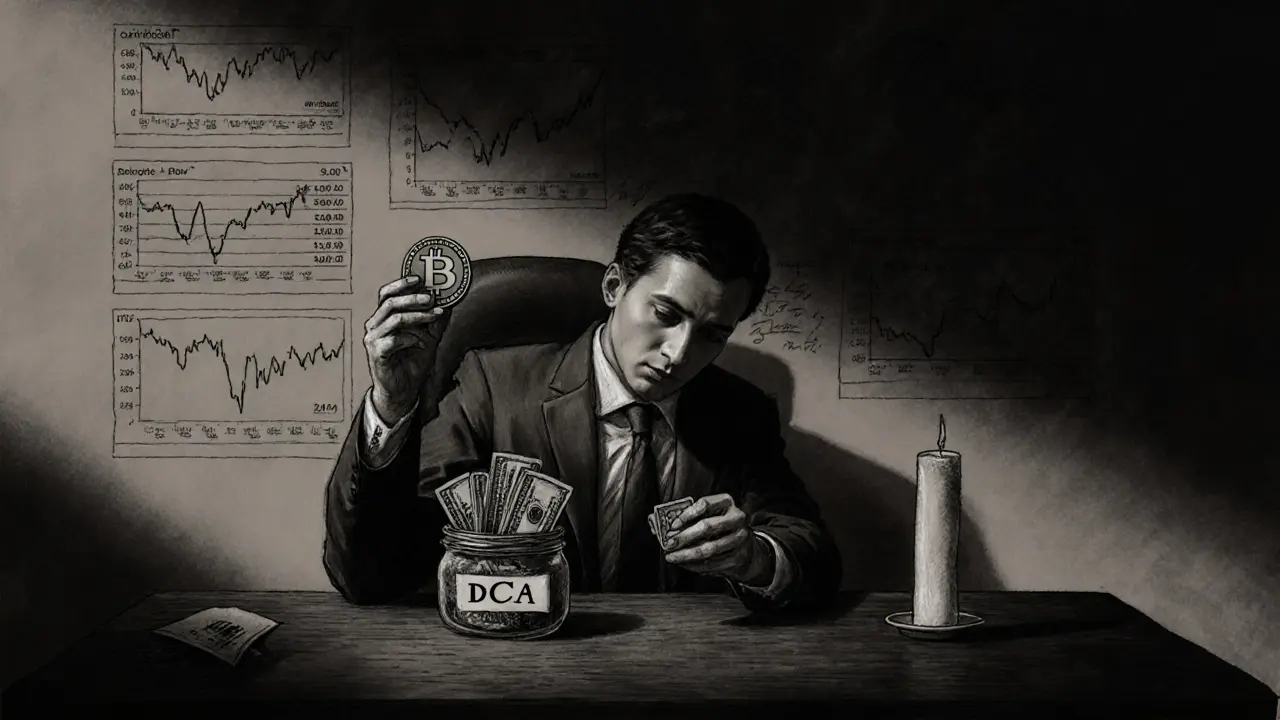DCA vs lump sum in crypto: one strategy wins mathematically, the other wins psychologically. Learn which one fits your risk level, timeline, and emotional tolerance in 2025.
DCA Crypto: How Dollar-Cost Averaging Works in Crypto and Why It Matters
When you hear DCA crypto, a strategy where you buy a fixed amount of cryptocurrency at regular intervals, regardless of price. It’s not a secret trick—it’s the quiet, reliable habit that separates steady investors from those chasing pumps and dumps. You don’t need to time the market. You just show up. Every week. Every month. Buy $50 of Bitcoin. Buy $25 of Ethereum. Keep going. That’s it.
This approach works because crypto doesn’t move in straight lines. Prices swing wildly—sometimes 30% in a day. One week, you’re buying at $60,000. Next week, it’s $52,000. The week after, it’s $58,000. If you waited for the "perfect" price, you’d never buy. But with DCA crypto, you buy anyway. You get more when it’s cheap. Less when it’s high. Over time, your average cost smooths out. And that’s the whole point.
Look at the posts below. You’ll see tokens like USDZ, a stablecoin backed by real credit loans that offer 16% APY, or SAND, a metaverse token distributed through airdrops that reward early participants. But you’ll also see dead coins—HarryPotterTrumpSonic100Inu, a meme coin with zero volume and no team—that no one cares about anymore. DCA doesn’t care if a coin is a meme or a utility token. It cares that you’re consistent. You’re not betting on one coin to go to the moon. You’re building a position over time, across assets, with discipline.
Most people think crypto investing means watching charts all day. It doesn’t. It means setting up a recurring buy, forgetting about it, and letting time do the work. The biggest risk isn’t volatility—it’s quitting. Stopping. Waiting for the "right moment." That moment never comes. But DCA crypto? It’s always the right time to start.
Below, you’ll find real stories—some about airdrops that failed, exchanges that vanished, and tokens that collapsed. But you’ll also see how real investors used DCA to hold through the noise. Whether it’s Bitcoin’s 2022 crash or Cardano’s 2025 token unlock, the pattern holds: those who stuck with their plan came out ahead. Not because they were smart. Because they showed up.

